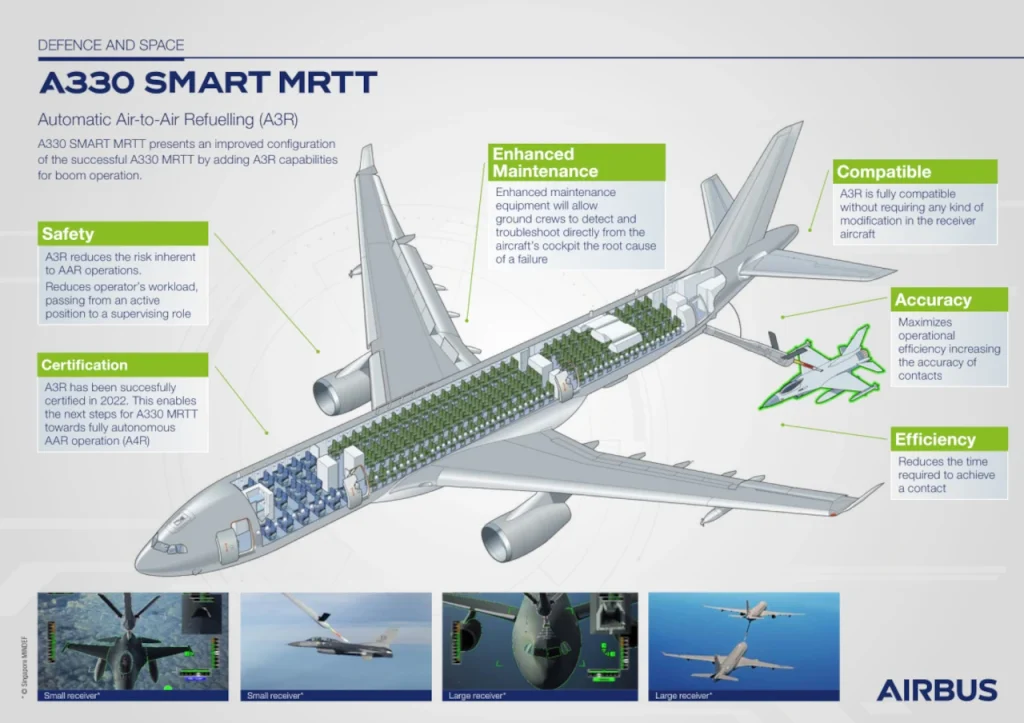The A330 MRTT has just added a new string to its bow: automatic refuelling. Airbus, along with the Republic of Singapore Air Force, achieved the Spanish National Institute for Aerospace Technology (INTA) certification. This allows Airbus to continue its momentum of “world firsts” concerning in-flight refuelling and to consider future projects (A4R, Auto’Mate, etc.). It goes without saying that it is also a positive point for the LMXT in the United States, facing the KC-46A Pegasus and its defective cameras.
On February 12, 2020, Airbus and Singapore agreed to collaborate on developing the A330 SMART MRTT for the Republic of Singapore Air Force (RSAF). A test campaign was recently organized with an RSAF A330 SMART MRTT and an F-16C belonging to the RSAF. However, since July 19, the A330 MRTT is now the first refueler certified for automatic in-flight refuelling (Automatic Air-to-Air Refueling, A3R). Automatic refuelling increases the safety of the procedure while increasing its efficiency. In addition, the SMART standard improves the maintenance of the device.

In a press release, the Director of Military Systems at Airbus Defense and Space said that the A330 MRTT has already been the first tanker to refuel an aircraft automatically. He added that the A3R capability certification is the result of the processes that began in 2018, with the world’s first automated contact with a telescopic pole in a joint operation with the Royal Australian Air Force (RAAF).
However, Airbus does not stop at an A3R capability: it requires the operator to monitor the manoeuvre. The future A4R capability (Autonomous Assets Air-to-Air Refueling ), currently under development, should make it possible to eliminate the role of the operator. There is also the Auto’Mate project, which should enable the development of an autonomous formation flight capability (Autonomous Formation Flight, AF2) or the automatic refuelling project, but this time from the aircraft to be refuelled. The first tests for these projects should begin in 2023, with an official demonstration between an A310 and DT-25 drones. These various programs are managed by UpNext, an Airbus subsidiary specializing in advanced technologies.
This certification and the future improvements in in-flight refuelling at Airbus are strong arguments for the LMXT (project between Lockheed Martin and Airbus) against the KC-46A Pegasus. Moreover, the latter has still not entered 100% active service since its cameras did not detect planes in certain situations.
